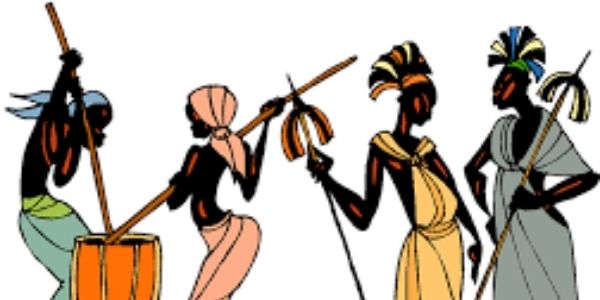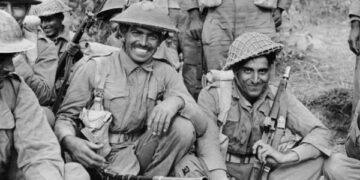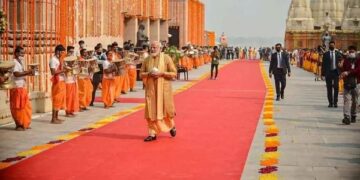Do you know The tribes of India constitute 8.2% of the total population? Besides, India has. Our country has the most significant number of tribes as compared to any other country. Therefore, in this article, let us understand the complete details of the Indian Tribes. Further, we have covered the complete information on the tribal communities, groups in India. Also, types of tribes and Indian tribe names. Please read the below article for more interesting facts and know where and how they live. Let’s begin.
What is Tribe?
In the first place, a tribe is a social division in a traditional society consisting of families linked by social, economic, religious, or blood ties, with a common culture and dialect. Then, we will understand all the other details related to the Tribe tribal communities in India, types of tribes, and Indian tribe names.
Points to Know – Indian Tribes
- In the first place, the total population of Scheduled Tribes is 10.43 crore in 2011. It accounts 8.6% of the total population of the country.
- Further, Scedule Tribes in India, form the largest proportion of the total population in Lakshadweep and Mizoram followed by Nagaland and Meghalaya. Besides, Madhya Pradesh has the largest number of scheduled Tribes followed by Orissa.
- Then, in the Lok Sabha 47 seats are reserved for Scheduled
Ministry of Tribal Affairs
Scheduled Tribes – Further, the Ministry of Tribal Affairs is responsible for the complete developments of the scheduled tribes in India. Then, it was set up in the year 1999. Besides, it has objectives stating that it will provide a more focused approach to the socio-economic development of the STs. Later, the Ministry of Tribal Affairs is for the overall policy, planning, and coordination of development programs for the Scheduled Tribes. Besides, for the development of the communities policy, planning, monitoring, evaluation, etc. Then, check out the below points to know about the Ministry for tribal affairs,
- In the first place, as a Division of the Ministry of Home Affairs named as ‘Tribal Division’ since independence up to Sept 1985.
- Ministry of Welfare – From September 1985 to May 1998.
- Ministry of Social Justice & Empowerment – from May 1998 to September 1999.
Note – If you want to different Acts of India, you can click here. We have covered all the necessary details.
Types of Tribes
Further, below we have added the details of the types of tribes according to geographical location, language, and race.
Geographical Location
- North Eastern Zone- Here you will find tribes from eastern Kashmir, eastern Punjab, Himachal Pradesh, Nagaland, Assam, Uttar Pradesh that falls in this zone. Further, The aka, the Mishmi, the naga, and chulikta come in this zone.
- Central Zone- Further, in this zone, you will find tribes from tribes from Bihar, Bengal, Southern Rajasthan, Madhya Pradesh, Orissa fall under this zone. Besides, The konth, the Santhal, the Gond, the muria, and the baiga come in this zone.
- Southern Zone-Then, here you will find tribes from Andhra Pradesh, Tamil Nadu, Karnataka, and Kerala fall under this zone. The toda, the chenchu, the Kadar, and the koraga come in this zone.
Further, in Indian Tribes, Language – 3 main groups fall in this classification.
- The Sino-Tibetan- You will finThe Sino-Tibetan- You will find tribes from the North-Eastern zone comes in this group.
- Austric linguistic group- then, here from the central zone belongs to this group.
- The Dravidian linguistic group- Lastly, here, you will find tribes from the southern zone belonging to this group.
Based on race – the classification of tribes under this category mainly includes.
- The Mongoloid- Here you will find tribes living in Himalayan regions belong to this group.
- The Australoid- tribes living in central India fall under this group.
- The Negrito- tribes of Andaman Island belongs to this group.
Tribal Groups in India – Indian Tribes
Now let us understand the main part of the article that is Indian Tribe’s types.
- The Sentinelese Tribe – There are not many known people; they live in a small forest island called North Sentinel in the Andaman & Nicobar Islands. Further, contact with these people is so limited that t it is not even known as to what the Sentinelese tribesmen call their tribe. They have a population of 15.
- The Great Andamanese Tribe comprises the largest tribal group on the Andaman & Nicobar Islands. However, the number is reduced over the past few years. Besides, it is the oldest tribe in the world and originally numbered more than 10,000 in the Andaman & Nicobar Islands since the 19th Century. Then, today there a very few people left on the islands, and they are marked as among critically endangered Primitive Tribal Groups in India and the world.
- The Jarawa Tribe – Further, these people are less hostile than others. Then, they are not completely cut off from the outside world, for these people exclusive wards are present in the Primary Health Centres and hospitals wherein non-tribals are not allowed to visit.
- The Onge Tribe – It is one of four Negrito tribal groups of the Andaman & Nicobar Islands. Further, many lost their lives during the fight with the British occupation of the islands. Besides, habitats for the Onge have been varied due to activities by foreign settlers, such as a decline in wildlife and deforestation.
Continued – Types of Tribes
- The Kamar Tribe – These tribes have shown a population drop from 20,565 in 1991 to 666 in the 2011 Census. It happened due to malnutrition, sexually transmitted diseases, and high infant mortality or the mortality of children from these communities. They have a population of 666.
- The Kadar Tribe is a small group of people residing in the hilly region near Cochin and living in the forests without practicing agriculture. Besides, they receive needs from forests, although many Kadar men work as laborers. Then, they have a population of 2949.
- The Kurumba Tribe – These people usually reside in the Nilgiri Hills and they are originally from pastoralists. Further, the number decreased after the fall of the Pallava Dynasty in the 8th Century. They have a population of 9409.
- The Birhor Tribe – These are the people who are from dwellers and live nomadic life. Besides, they have a population of 11,751. Further, they live in a nomadic hunter gather’s life, and they collect t forest produce such as honey or sell ropes made from jungle vines in local markets.
- The Bondo Tribe – These people are attractively dressed, and earlier, they live in the highlands of Odisha inhabit a picturesque and ecologically diverse territory. Besides, they live in hilltops or high on hill slopes, usually with good access to resources. They have a population of 12,231.
- The Dongria Khond Tribe in Odisha – These people live in the Niyamgiri Hills range in the state of Odisha. Further, Niyamgiri Hills are deeply forested and have many streams running through them.
National Commission for Scheduled Tribes
The National Commission for Scheduled Tribes was issued by amending Article 338 and adding a new Article 338A. Further, SCs and STs was replaced by two separate Commissions,
- The National Commission for Scheduled Castes
- The National Commission for Scheduled Tribes
One can visit the official website for more information on the Indian Tribes. Read More
Conclusion – Indian Tribes
To conclude, in the article, we have covered the complete information of the tribal communities in India, Indian tribe names, and types of tribes. Once you read the entire article, you will understand so many unknown facts about the Indian Tribes. We have added details and where they reside across the nation. Also, understand what the facilities given to them by the government and other related information are. As a whole, this article will help you get complete information on the tribal communities in India. Besides, the competitive examination needs to know about the essential points on the Indian Tribes, Indian tribe names, and tribal groups in India. Then, understand why it is important for one to study for the exam, you can click here for more details on the exam.
FAQs – Indian Tribes
Check out the below FAQs for more details.
You will find 645 distinct tribes in India.
The Santhal are the largest tribe in India.
The oldest tribe in India is the Jarawa.
The smallest tribe in India is the Andamanese
Some of the problems are lack of education, Gender Issues, etc.
Editor’s Note | Indian Tribes
In the article, we have added all information on the tribal groups in India, Indian tribe names, and other details. Further, they are also important for the IAS exam, and we all know the IAS exam has a vast syllabus. To get the best results in the exam, you need to cover the complete syllabus. Then, in our other articles, you will get the complete information on the IAS exam and other exams conducted by the UPSC. Then, by the end of this article, you will get complete information on the Indian Tribes. If you want to know more about the same you can visit the official website.










